


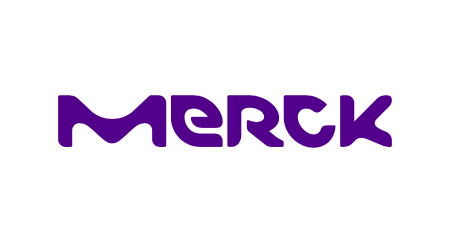
Financial Summary
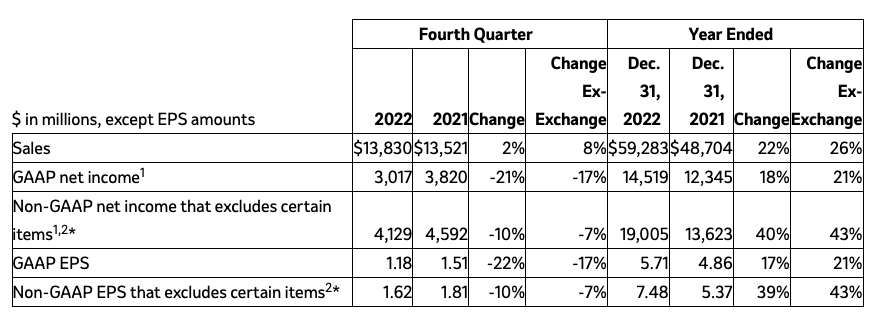
Generally Accepted Accounting Principles (GAAP) earnings per share (EPS) assuming dilution was $1.18 for the fourth quarter and $5.71 for the full year of 2022. Non-GAAP EPS was $1.62 for the fourth quarter and $7.48 for the full year of 2022. The declines in GAAP and non-GAAP EPS in the fourth quarter versus the prior year were primarily due to lower fourth quarter 2021 effective tax rates and the unfavorable impact of foreign exchange, partially offset by strong underlying business performance. The GAAP EPS decline in the fourth quarter also reflects the unfavorable impact of losses from investments in equity securities compared with gains in the prior year. Full-year 2022 and 2021 GAAP and non-GAAP EPS were negatively impacted by $0.22 and $0.65, respectively, related to an asset acquisition, and collaboration and licensing agreements.
Non-GAAP EPS excludes acquisition- and divestiture-related costs (including pretax intangible asset impairment research and development [R&D] charges of $780 million and $1.7 billion in the fourth quarter and full year of 2022, respectively, largely related to nemtabrutinib) and restructuring costs, as well as income and losses from investments in equity securities.
In 2022, the company changed the treatment of certain items for purposes of its non-GAAP reporting. Results for 2021 have been recast to conform to the new presentation. For more information, refer to the Form 8-K filed by the company on April 21, 2022.
Oncology Program Highlights
- Merck announced the following regulatory and clinical milestones for KEYTRUDA (pembrolizumab), Merck¡¯s anti-PD-1 therapy:
- KEYTRUDA approved by the U.S. Food and Drug Administration (FDA) as adjuvant treatment following resection and platinum-based chemotherapy for adult patients with stage IB (T2a ¡Ý4 centimeters), II, or IIIA non-small cell lung cancer (NSCLC), based on the pivotal Phase 3 KEYNOTE-091 trial.
- In collaboration with Moderna, Inc. (Moderna), positive topline results from the Phase 2b KEYNOTE-942/mRNA-4157-P201 trial, which showed that KEYTRUDA in combination with mRNA-4157/V940, an investigational personalized mRNA therapeutic cancer vaccine, demonstrated a statistically significant and clinically meaningful improvement in the primary endpoint of recurrence-free survival versus KEYTRUDA alone for the adjuvant treatment of patients with stage III/IV melanoma following complete resection.
- In collaboration with Seagen Inc. and Astellas Pharma Inc., acceptance by the FDA for priority review of the supplemental Biologics License Application for KEYTRUDA in combination with Padcev®3 (enfortumab vedotin-ejfv) for the treatment of patients with locally advanced or metastatic urothelial cancer who are not eligible to receive cisplatin-containing chemotherapy.
- Positive topline results from the pivotal Phase 3 KEYNOTE-859 trial investigating KEYTRUDA in combination with chemotherapy for the first-line treatment of patients with human epidermal growth factor receptor 2 (HER2)-negative locally advanced unresectable or metastatic gastric or gastroesophageal junction adenocarcinoma.
- Positive topline results from the Phase 3 KEYNOTE-966 trial investigating KEYTRUDA in combination with standard of care chemotherapy (gemcitabine and cisplatin) for the first-line treatment of patients with advanced or unresectable biliary tract cancer.
- Merck announced that Lynparza (olaparib), an oral PARP inhibitor being co-developed and co-commercialized with AstraZeneca, was approved in the European Union (EU) in combination with abiraterone and prednisone or prednisolone for the treatment of adult patients with metastatic castration-resistant prostate cancer in whom chemotherapy is not clinically indicated, based on the Phase 3 PROpel trial.
Vaccine Program Highlights
- Merck announced that an updated systematic literature review of 138 peer-reviewed studies observed that use of GARDASIL [Human Papillomavirus Quadrivalent (Types 6, 11, 16 and 18) Vaccine, Recombinant] led to reductions in the rates of high-grade (precancerous) and low-grade cervical lesions, as well as reductions in certain non-cervical HPV-related diseases and HPV infection in women and men.
Cardiovascular Program Highlights
- Merck will present results from the Phase 3 STELLAR study evaluating investigational sotatercept for the treatment of patients with pulmonary arterial hypertension, and from the Phase 2 study evaluating MK-0616, the company¡¯s investigational oral macrocyclic peptide PCSK9 inhibitor for the treatment of patients with hypercholesterolemia, at the American College of Cardiology¡¯s 72nd Annual Scientific Session together with the World Heart Federation¡¯s World Congress of Cardiology (ACC.23/WCC). Merck will host an investor event at ACC.23/WCC on March 6, 2023, to discuss these results. Further details will be announced at a later date.
Business Development Highlights
- Merck announced and successfully completed the acquisition of Imago BioSciences, Inc. (Imago), for an approximate total equity value of $1.35 billion, expanding Merck¡¯s growing hematology portfolio.
- Merck announced that it has expanded its relationship and entered into an exclusive license and collaboration agreement with Kelun-Biotech (a holding subsidiary of Sichuan Kelun Pharmaceutical Co., Ltd) to develop up to seven investigational preclinical antibody-drug conjugates (ADCs) for the treatment of cancer.
Environmental, Social and Governance (ESG) Updates
- Merck was named one of America¡¯s most JUST companies by JUST Capital and CNBC, ranking No. 1 in the pharmaceuticals and biotech industry for the third straight year and No. 26 overall of all companies named.
- Merck published its Sustainability Bond Allocation Report, which highlighted how the company¡¯s initial $1.0 billion sustainability bond is helping to drive progress across ESG focus areas.
Fourth-Quarter and Full-Year Revenue Performance
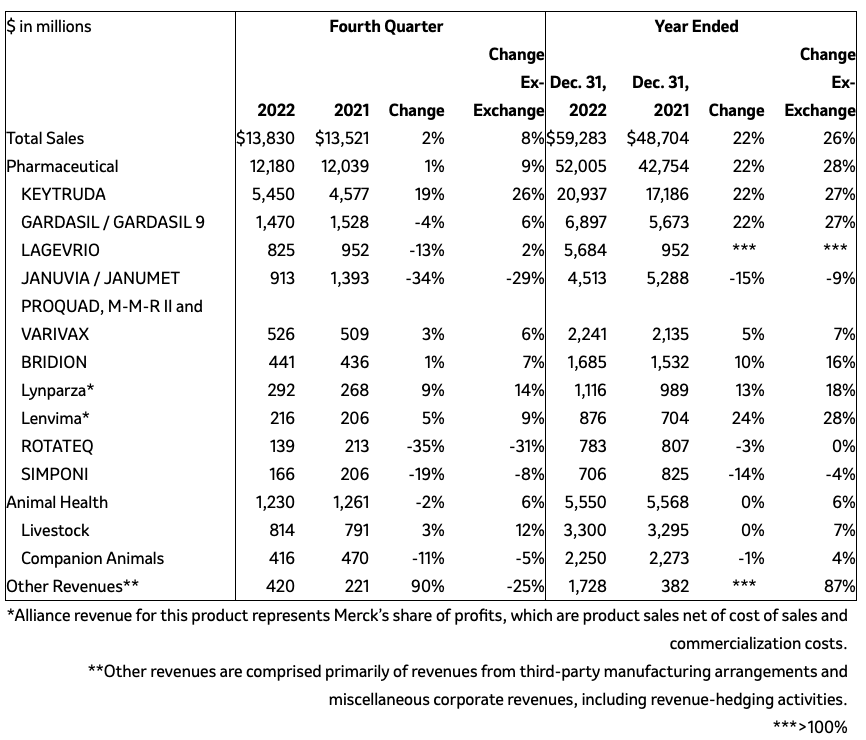
Fourth-quarter pharmaceutical sales grew 1% to $12.2 billion. Excluding the unfavorable impact of foreign exchange, pharmaceutical sales grew 9%, primarily driven by oncology and hospital acute care, partially offset by diabetes.
Growth in oncology was largely driven by higher sales of KEYTRUDA, which rose 19% to $5.5 billion in the quarter. Global sales growth of KEYTRUDA reflects continued strong momentum from metastatic indications including certain types of NSCLC, renal cell carcinoma, head and neck squamous cell carcinoma, triple-negative breast cancer (TNBC) and microsatellite instability-high (MSI-H) cancers, and increased uptake across recent earlier-stage launches, including certain types of neoadjuvant/adjuvant TNBC in the U.S. Also contributing to growth in oncology was increased alliance revenue from Lynparza, which grew 9% to $292 million, driven primarily by higher demand in the U.S. In addition, sales of WELIREG (belzutifan), an oral hypoxia-inducible factor-2 alpha inhibitor, increased to $40 million due to continued uptake in the U.S. following the product¡¯s launch in 2021.
Vaccines sales performance reflects lower combined sales of GARDASIL and GARDASIL 9 (Human Papillomavirus 9-valent Vaccine, Recombinant), vaccines to prevent certain cancers and other diseases caused by HPV, which declined 4% to $1.5 billion. Excluding the unfavorable impact of foreign exchange, GARDASIL/GARDASIL 9 sales grew 6%, reflecting higher demand outside of the U.S., particularly in China.
Vaccines sales performance also reflects lower sales of PNEUMOVAX 23 (pneumococcal vaccine polyvalent), a vaccine to help prevent pneumococcal disease, which declined 50% to $145 million, primarily reflecting lower U.S. demand as the market continues to shift toward newer adult pneumococcal conjugate vaccines. In addition, sales of ROTATEQ (Rotavirus Vaccine, Live Oral, Pentavalent), a vaccine to help protect against rotavirus gastroenteritis in infants and children, declined 35% to $139 million, primarily due to lower sales in China, which benefited in the fourth quarter of 2021 from increased supply, and lower sales in the U.S. largely due to the timing of public-sector purchases. Vaccines sales performance benefited from the ongoing pediatric launch of VAXNEUVANCE (Pneumococcal 15-valent Conjugate Vaccine), a vaccine to help prevent invasive pneumococcal disease, which had sales of $138 million, largely due to inventory stocking in the U.S.
Pharmaceutical sales growth was partially offset by lower combined sales of JANUVIA (sitagliptin) and JANUMET (sitagliptin and metformin HCI), for the treatment of type 2 diabetes, which declined 34% to $913 million, primarily reflecting generic competition in certain international markets, particularly in Europe and the Asia Pacific region, and lower demand and net pricing in the U.S.
Sales of LAGEVRIO (molnupiravir), an investigational oral antiviral COVID-19 medicine, decreased 13% to $825 million. Excluding the unfavorable impact of foreign exchange, sales increased 2%, primarily driven by strong growth in Japan and the U.K. and the launch in Australia, offset by a decline in the U.S.
Full-year 2022 pharmaceutical sales grew 22% to $52.0 billion. Pharmaceutical sales growth was 16% excluding LAGEVRIO and the unfavorable impact of foreign exchange, primarily driven by higher sales in oncology, particularly KEYTRUDA, higher sales of vaccines, reflecting strong growth of GARDASIL/GARDASIL 9 and the ongoing pediatric launch of VAXNEUVANCE, as well as growth in hospital acute care products, including ZERBAXA and BRIDION (sugammadex) injection 100 mg/mL, a medicine for the reversal of neuromuscular blockade induced by rocuronium bromide or vecuronium bromide in adults and pediatric patients ages 2 years and older undergoing surgery. Pharmaceutical sales growth in 2022 was partially offset by lower sales of JANUVIA and JANUMET, primarily reflecting lower demand in Europe as a result of generic competition, and a decline in PNEUMOVAX 23 sales as the U.S. market continues to shift toward newer adult pneumococcal conjugate vaccines. COVID-19-related disruptions negatively affected sales in 2022, but to a lesser extent than in 2021, which benefited year-over-year sales growth.
Animal Health Revenue
Animal Health sales totaled $1.2 billion for the fourth quarter of 2022, a 2% decline compared with the fourth quarter of 2021. Excluding the unfavorable effect of foreign exchange, Animal Health sales increased 6%. Sales growth of livestock products reflects higher demand, notably in the ruminant and poultry product portfolio, which includes technology solutions products, as well as higher pricing. Sales of companion animal products were negatively impacted by a reduction in veterinary visits in the broader companion animal market following the more favorable trend during the pandemic, as well as supply constraints for certain vaccines, partially offset by higher pricing.
Fourth-Quarter and Full-Year Expense, EPS and Related Information
The tables below present selected expense information.
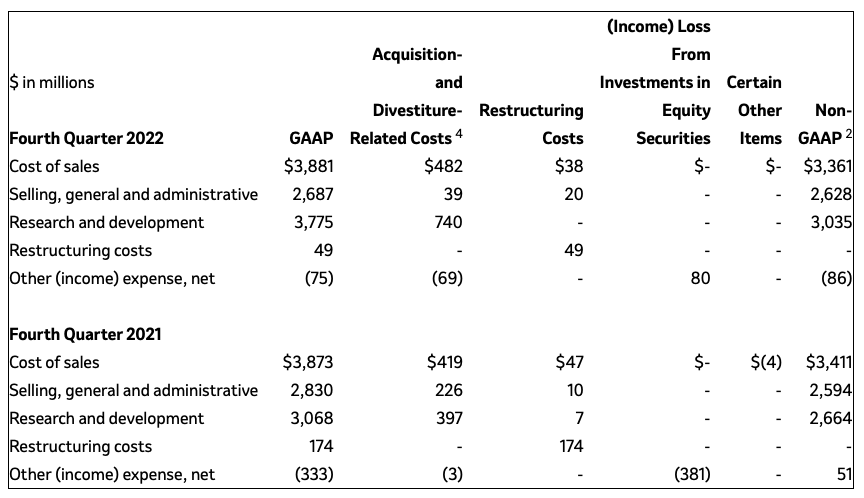
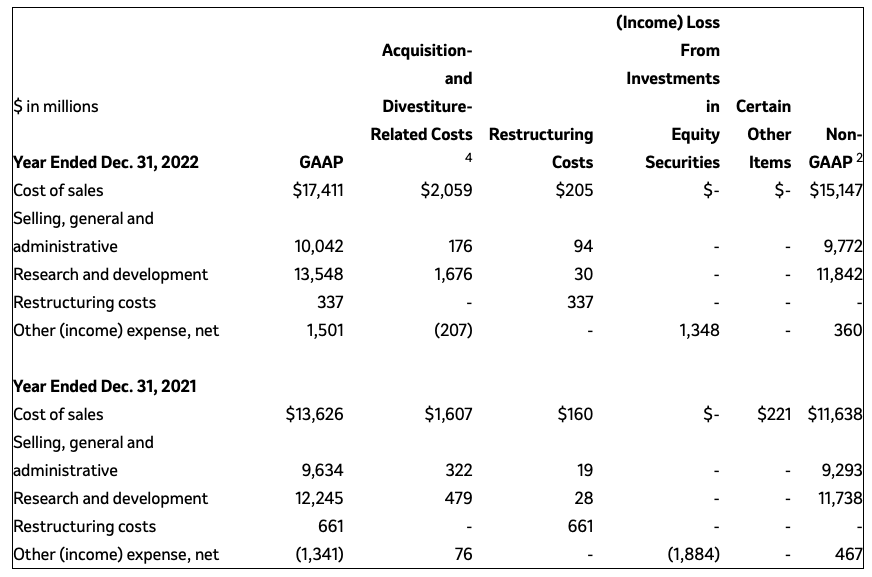
GAAP Expense, EPS and Related Information
Selling, general and administrative (SG&A) expenses were $2.7 billion in the fourth quarter of 2022, a decrease of 5% compared to the fourth quarter of 2021. The decrease primarily reflects lower acquisition- and divestiture-related costs and the favorable effect of foreign exchange, partially offset by higher promotional spending, as well as higher administrative costs. Full-year SG&A expenses were $10.0 billion, an increase of 4% compared to the full year of 2021. The increase primarily reflects higher administrative costs, as well as higher promotional spending, partially offset by the favorable impact of foreign exchange and lower acquisition- and divestiture-related costs.
R&D expenses were $3.8 billion in the fourth quarter of 2022, an increase of 23% compared to the fourth quarter of 2021. The increase was primarily driven by higher intangible asset impairment charges related to nemtabrutinib, which were $780 million in the fourth quarter of 2022 compared with $275 million in the fourth quarter of 2021, lower reimbursement of LAGEVRIO R&D costs from Ridgeback Biotherapeutics (Ridgeback), higher compensation and benefit costs reflecting in part increased headcount to support expanded clinical development activity, and higher clinical development spending. R&D expenses were $13.5 billion for the full year of 2022, an increase of 11% compared with the full year of 2021. The increase was primarily driven by higher intangible asset impairment charges, which were $1.7 billion in 2022 compared with $275 million in 2021, largely related to nemtabrutinib, $690 million of charges in 2022 related to collaboration and licensing agreements with Moderna, Orna Therapeutics (Orna) and Orion Corporation (Orion), as well as higher compensation and benefit costs and clinical development spending. The increase was partially offset by a $1.7 billion charge in the prior year for the acquisition of Pandion Therapeutics, Inc. (Pandion).
Other (income) expense, net, was $75 million of income in the fourth quarter of 2022 compared to $333 million of income in the fourth quarter of 2021. Other (income) expense, net, was $1.5 billion of expense in the full year of 2022 compared to $1.3 billion of income in the full year of 2021. The change in both periods is primarily due to net losses from investments in equity securities in 2022 compared with net gains from investments in equity securities in 2021.
GAAP EPS was $1.18 for the fourth quarter of 2022 compared to $1.51 for the fourth quarter of 2021. GAAP EPS was $5.71 for the full year of 2022 compared to $4.86 for the full year of 2021.
Non-GAAP Expense, EPS and Related Information
Non-GAAP gross margin was 75.7% for the fourth quarter of 2022 compared to 74.8% for the fourth quarter of 2021. The increase primarily reflects the favorable effects of product mix and foreign exchange.
Non-GAAP gross margin was 74.4% for the full year of 2022 compared to 76.1% for the full year of 2021. The decrease primarily reflects the impact of higher revenue from third-party manufacturing arrangements and sales of LAGEVRIO, both of which have lower gross margins, partially offset by the favorable effects of product mix and foreign exchange.
Non-GAAP SG&A expenses were $2.6 billion in the fourth quarter of 2022, an increase of 1% compared to the fourth quarter of 2021. Non-GAAP SG&A expenses for the full year were $9.8 billion, an increase of 5% compared to the full year of 2021. The increase in both periods primarily reflects higher administrative costs, as well as higher promotional spending, partially offset by the favorable impact of foreign exchange.
Non-GAAP R&D expenses were $3.0 billion in the fourth quarter of 2022, an increase of 14% compared with the fourth quarter of 2021. The increase was primarily driven by lower reimbursement of LAGEVRIO R&D costs from Ridgeback, higher compensation and benefit costs reflecting in part increased headcount to support expanded clinical development activity, and higher clinical development spending. Non-GAAP R&D expenses were $11.8 billion for the full year of 2022, an increase of 1% compared with the full year of 2021. The increase was primarily driven by $690 million of charges in 2022 related to collaboration and licensing agreements with Moderna, Orna and Orion, as well as higher compensation and benefit costs and clinical development spending. The increase was partially offset by a $1.7 billion charge in the prior year for the acquisition of Pandion.
Non-GAAP other (income) expense, net, was $86 million of income in the fourth quarter of 2022 compared to $51 million of expense in the fourth quarter of 2021. Non-GAAP other (income) expense, net, was $360 million of expense in the full year of 2022 compared to $467 million of expense in the full year of 2021.
The non-GAAP effective tax rate for the fourth quarter of 2022 of 15.6% reflects the unfavorable impact of a higher than anticipated full-year rate of 14.2% due to a less favorable mix of income and expense than previously anticipated, while the non-GAAP effective tax rate for the fourth quarter of 2021 of 4.3% reflects the favorable impact of a lower than previously expected full-year 2021 rate of 12.4%.
A reconciliation of GAAP to non-GAAP net income and EPS is provided in the table that follows.
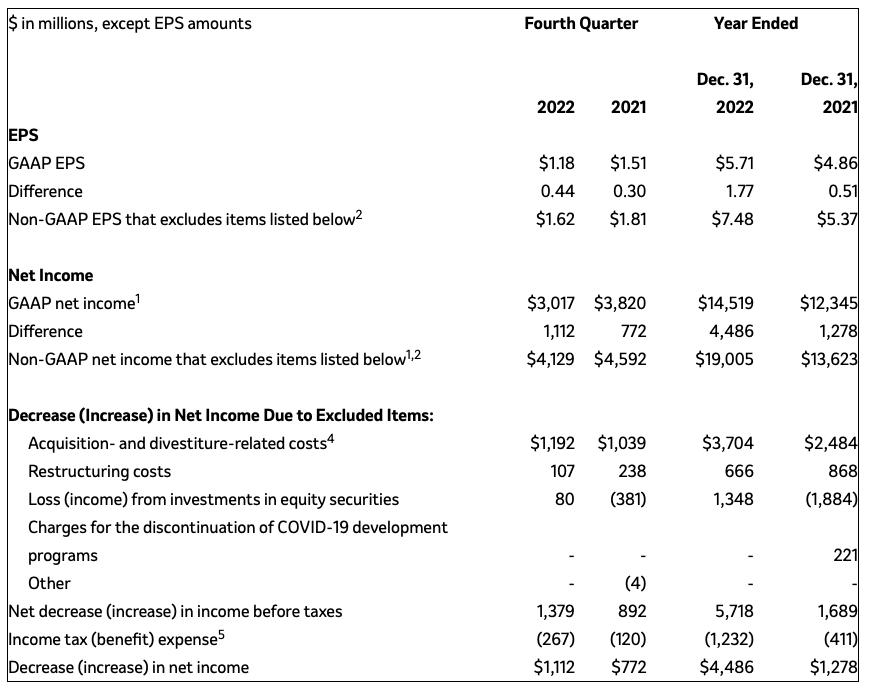
Financial Outlook
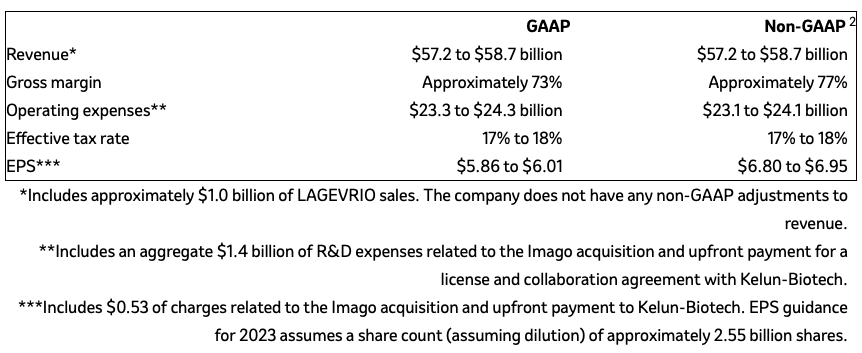
Merck anticipates full-year 2023 revenue to be between $57.2 billion and $58.7 billion, including a negative impact of foreign exchange of approximately 2% at mid-January 2023 exchange rates. The company expects a significant decline in sales of LAGEVRIO, which are expected to be approximately $1.0 billion.
Merck expects full-year 2023 GAAP EPS to be between $5.86 and $6.01.
Merck expects full-year 2023 non-GAAP EPS to be between $6.80 and $6.95, including a negative impact of foreign exchange of approximately 4%. The non-GAAP range excludes acquisition- and divestiture-related costs, costs related to restructuring programs, as well as income and losses from investment in equity securities.
Operating expenses include incremental R&D spending to advance the development of the Imago and Kelun-Biotech programs, as well as other promising programs related to the collaboration and licensing agreements with Moderna, Orna and Orion.
The financial outlook does not assume additional significant potential business development transactions.
A reconciliation of anticipated 2023 GAAP EPS to non-GAAP EPS and the items excluded from non-GAAP EPS are provided in the table below.
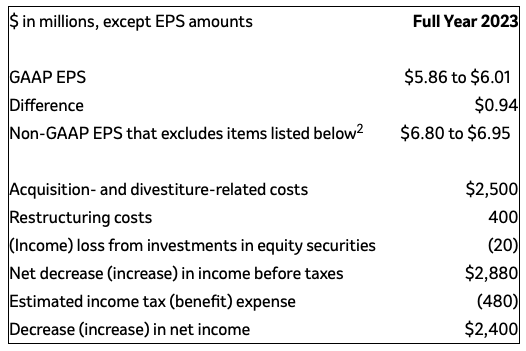
About Merck
At Merck, known as MSD outside of the United States and Canada, we are unified around our purpose: We use the power of leading-edge science to save and improve lives around the world. For more than 130 years, we have brought hope to humanity through the development of important medicines and vaccines. We aspire to be the premier research-intensive biopharmaceutical company in the world ¨C and today, we are at the forefront of research to deliver innovative health solutions that advance the prevention and treatment of diseases in people and animals. We foster a diverse and inclusive global workforce and operate responsibly every day to enable a safe, sustainable and healthy future for all people and communities.